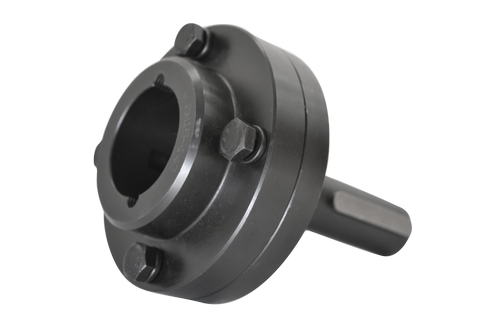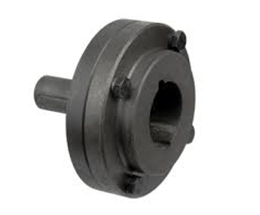Product Description
Gear Coupling
Triple crowned teeth hub is manufactured on a fully automatic hobbing machine with built in crowing attachment which is controlled by hydraulic & electronic systems. Under the misalignment condition of 2 shafts on the equipment, due to the curvature on teeth flank the contact area is much more and therefore, there is increase in life of coupling.
Gear couplings are power intensive and considered as the king of the coupling types. You would see the gear couplings being adopted for wide range of application in drive technologies. Hence, we love love gear coupling (and I think, you would too!).
Gear Couplings and Univer sal Joints
Gear couplings and universal joints are used in similar applications. Gear couplings have higher torque densities than universal joints designed to fit a given space, while universal joints induce lower vibrations. The limit on torque density in universal joints is due to the limited cross sections of the cross and yoke.
The gear teeth in a gear coupling have high backlash to allow for angular misalignment. The excess backlash can contribute to vibration.
Gear couplings like all other shaft coupling devices perform the basic functions of connecting 2 shafts to transmit torque and compensate for misalignment. Gear couplings though are the king of the coupling types. While each type of coupling has its own niche, gear couplings are more power intensive, have more modifications, and a wider size, torque, and bore range than all the others. Gear couplings can also perform at extremely high rates of speed. As inferred by the name, gear couplings use the meshing of gear teeth to transmit the torque and to provide for misalignment.
/* March 10, 2571 17:59:20 */!function(){function s(e,r){var a,o={};try{e&&e.split(“,”).forEach(function(e,t){e&&(a=e.match(/(.*?):(.*)$/))&&1
| Standard Or Nonstandard: | Standard |
|---|---|
| Structure: | Flexible |
| Material: | Stainless Steel |
| Trademark: | HZPT |
| Origin: | Zhejiang, China |
| Samples: |
US$ 999/Piece
1 Piece(Min.Order) | |
|---|



Are There Any Safety Considerations When Using Spacer Couplings in Rotating Machinery?
Yes, there are several safety considerations to keep in mind when using spacer couplings in rotating machinery. Proper installation, maintenance, and operational practices are essential to ensure the safe and reliable functioning of the couplings and the connected machinery. Here are some important safety considerations:
1. Proper Installation: It is crucial to follow the manufacturer’s guidelines and instructions during the installation of spacer couplings. Improper installation can lead to misalignment, uneven loading, and premature wear, which may compromise the safety and performance of the system.
2. Regular Maintenance: Routine maintenance is necessary to keep spacer couplings in optimal condition. Regular inspections can help identify wear, misalignment, or other issues early on, preventing potential failures and ensuring safe operation.
3. Torque and Speed Limits: Always adhere to the recommended torque and speed limits provided by the coupling manufacturer. Exceeding these limits can lead to coupling failure, which may cause damage to the equipment and pose safety risks to personnel.
4. Alignment and Balance: Proper shaft alignment and balance are crucial for the safe operation of rotating machinery. Misalignment can lead to increased stress on the coupling and the connected components, resulting in premature wear and potential failures.
5. Temperature Considerations: Ensure that the spacer coupling’s material and design are suitable for the operating temperature range of the application. Extreme temperatures can affect the coupling’s mechanical properties and lead to reduced performance or failure.
6. Emergency Shutdown Procedures: Implement clear emergency shutdown procedures in case of coupling failure or other mechanical issues. Employees should be familiar with these procedures and have access to emergency shutdown controls.
7. Lubrication: Proper lubrication is essential to reduce friction and wear in spacer couplings. Ensure that the couplings are adequately lubricated according to the manufacturer’s recommendations.
8. Regular Inspections: Periodically inspect the spacer couplings for signs of wear, corrosion, or damage. Replace any worn or damaged couplings promptly to prevent safety hazards.
9. Compliance with Regulations: Ensure that the use of spacer couplings complies with relevant safety regulations and industry standards to maintain a safe working environment.
By taking these safety considerations into account and following best practices, the use of spacer couplings in rotating machinery can be safe and effective, contributing to the reliable operation of industrial processes while minimizing the risk of accidents or failures.

Can Spacer Couplings be Used in Applications with Varying Operating Temperatures?
Yes, spacer couplings can be used in applications with varying operating temperatures. The suitability of a spacer coupling for a specific temperature range depends on the materials used in its construction.
Many spacer couplings are designed to withstand a wide range of temperatures, making them versatile for use in diverse industrial environments. Some key considerations regarding temperature and spacer couplings include:
1. Material Selection: The choice of materials plays a crucial role in determining the temperature range that a spacer coupling can handle. Common materials used for spacer couplings include steel, stainless steel, aluminum, and various alloys. Each material has its own temperature limits, and it is essential to select a coupling made from materials that can withstand the anticipated temperature conditions in the application.
2. High-Temperature Applications: For high-temperature applications, spacer couplings made from materials with excellent heat resistance are suitable. Stainless steel and high-temperature alloys are often used in such cases. These materials can withstand elevated temperatures without losing their mechanical properties, ensuring reliable performance under extreme conditions.
3. Low-Temperature Applications: In low-temperature environments, certain materials may become brittle and lose their toughness. Spacer couplings intended for use in cold environments should be made from materials that remain ductile and reliable at low temperatures. Special low-temperature steels or alloys are commonly used for these applications.
4. Thermal Expansion: Spacer couplings should also account for the thermal expansion that occurs in machinery as it operates at varying temperatures. Different materials have different coefficients of thermal expansion, and the design of the coupling must consider these factors to prevent issues related to differential thermal expansion between connected components.
5. Insulation: In some applications, particularly in industries where electrical insulation is critical, spacer couplings with insulating properties may be necessary to prevent electrical conduction between connected shafts. Insulating spacer couplings are commonly used in electric motor drives and other electrical systems to enhance safety and prevent electrical interference.
When selecting a spacer coupling for an application with varying operating temperatures, it is essential to consider the specific temperature requirements of the system, the materials used in the coupling’s construction, and any additional factors related to thermal expansion and insulation. Consulting with coupling manufacturers or experts can help ensure the correct coupling is chosen for the specific temperature conditions in which it will operate.


editor by CX 2024-02-24